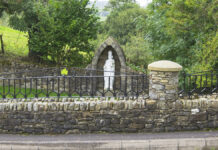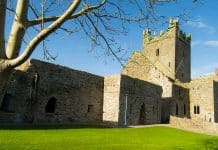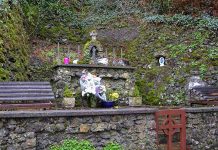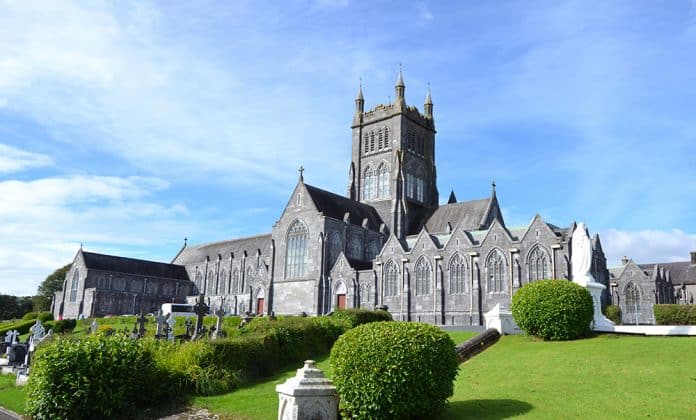
The original Cistercian Monastery was founded in 1098 and took its name from its location – the town of Cîteaux near Dijon.
The founding fathers of the order were a group of Benedictine monks who had become dissatisfied with what they saw as the lenient rules of their abbey and wanted instead to follow a more rigid life of Spiritual Contemplation.
After its establishment, the Cistercian Order grew quickly, to such an extent that within one hundred years it incorporated a huge number of monasteries located all across Europe.
Over the years it veered in and out of popularity, and its fortunes were inevitably affected by the numerous wars that raged across the continent throughout the centuries.
The Establishment of the Cistercian Monastery
Mount Melleray Abbey was the first Cistercian Monastery to be founded in Ireland after the Reformation.
Following the French Revolution, the French government ordered all foreign monks living at the Cistercian ‘Melleray’ monastery in Brittany to leave the country forthwith.
Thus, in 1832, a group of English and Irish monks travelled to Ireland to seek sanctuary and land on which they could build a new monastery.
Their prayers were answered when a perfect plot was gifted to them by Sir Richard Keane, and Mount Melleray was established.
Later, the monks, by now renowned for their devotion to Spiritual Contemplation, would become guardians to the ancient Ogham Stones located at this special site.
Monastery Life Today
These days, the monastery is still home to a number of monks who have dedicated their lives to worship and serving their local community.
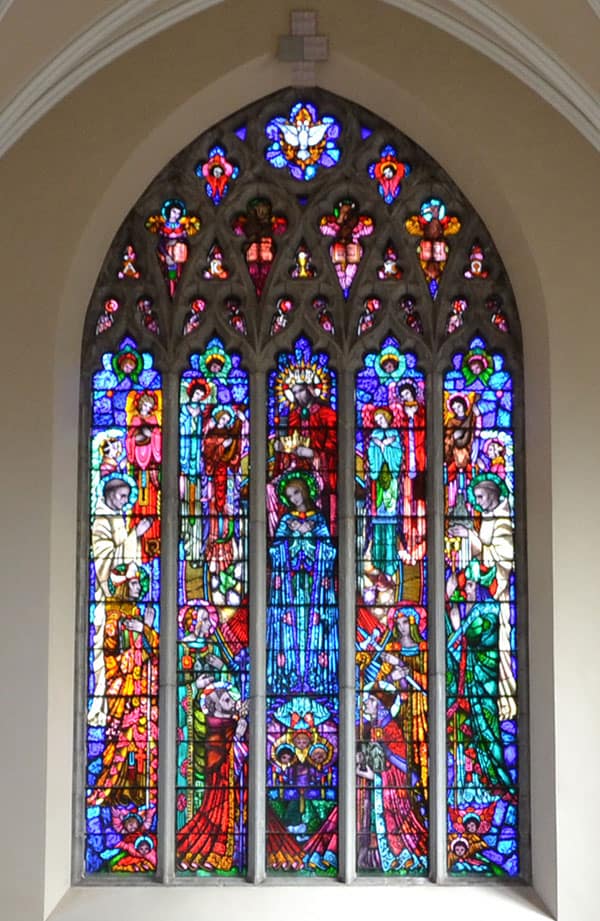
Refurbishment at Mount Melleray
Up until recently, the (mostly aged) monks residing at the site lived dispersed through the rambling collection of buildings, the majority of which that date back as far as the early 1800s.
However, a new purpose-built residential wing is now in place, allowing the monks to live as part of an integrated community with a far improved standard of living.
The new accommodation comprises twenty-seven separate rooms (cells), all of which look over the tranquil beauty of the wonderfully maintained gardens and the Knockmealdown mountains beyond.
Monastic Experience
The new wing is located inside the monastic enclosure; next to it is a guest house, also recently refurbished.
It was constructed on the site of a previous dormitory and is attached to the cloister building via the refectory.
The architecture reflects several key aspects of the monastic experience, including community and rigour (reflected in the cells’ ordered layout) and contemplation (reflected in the fact that the rooms all face west).
Visitors Welcome
Visitors are warmly welcomed by the resident monks and are encouraged to take part in liturgical observances.
In addition, the Repository is home to a wonderful array of Christian items, such as statues, rosary beads and a decent library of books, including some rare and beautiful medieval manuscripts.
Heritage Centre
The site’s Heritage Centre offers a real insight into the history of the site and the lifestyle of the monks.
There is a variety of well-curated visual displays including a slide show and photographs, which explain the theology and philosophy by which they live their religious lives.
Retreat Centre
The Retreat House is fitted out with modest rooms intended for personal quiet contemplation and prayer.
These need to be booked in advance.
Please note that these rooms are not tourist accommodation: they are offered to those guests seeking religious sanctuary.
All guests are humbly requested to respect the sanctity of this holy site.
Kilgrovan Ogham Stones
The Monastery also acts as the guardian of some ancient Ogham Stones.
Ogham is an ancient alphabet that can be seen on certain stones dating from c. 4th-6th centuries AD, though some experts believe the script dates back as far as the 1st century AD.
This script is found on stones across Ireland, in particular Waterford, Cork and Kerry.
It is also found on stones in various locations across the UK as well as parts of France and Scandinavia.
The stones here comprise one element of the ‘Buaille na gCuimhnte’ (Courtyard of Memories) exhibition.
This exhibition is an exposition in pictures and words of the long history of this wonderful place.
The Ogham Stones on display were discovered by William Williams of Dungarvan, Co. Waterford in 1857 in an ancient cemetery in Kilgrovan, Ballinacourty near Dungarvan.
The stones were brought to Mount Melleray in c.1910 from Kilgrovan by an archaeology professor, Canon P Power.
For over forty years, the stones were situated within a grove of trees on the site; latterly they were moved under cover and placed in the foyer of the nearby old school building.
Their final move brought them to their present home in an exhibition area within the refurbished 19th-century farm buildings.
In the 1960’s 2 further Ogham Stones were discovered at Kilgrovan during site clearance work which are now stored in the National Museum of Ireland. For details about these stones please visit the Ogham in 3D Project website.
The Inscriptions
There are five Ogham Stones at this site of Spiritual Contemplation. The following readings were all taken by Macallister (1945).
Stone 1 is the tallest stone.
The inscription ‘DEBRANI MAQI ELTI AVI OGATOS’ means ‘Debrani son of Elti grandson of Ogatos’.
Stone 2 is damaged, and it is thought that some of the inscription has been lost.
What remains reads ‘VAGNI MUCOI CUNEA’, which translates as ‘Descendant of Cunia’.
Stone 3 sits in the very centre of the Cistercian Monastery/Abbey’s dedicated exhibition space.
It is the most diminutive of the stones.
The inscription on this stone is ‘–NAMAQI LUGUDECA MUC- – CUNEA’, which translates as ‘Cunamaqi Lugudeca descendant of Cunea’.
Stone 4 is also damaged, affecting the start and end of its inscription. What is left reads ‘MAQI E – -‘ – this fragment translates as ‘…grandson…’.
Stone 5 has an inscription that reads ‘NASIGNI MAQ ER…I’, meaning ‘Nisigni Son of Er…i (the last word is a name beginning with ER; the rest has been lost).
The stones are a very popular attraction, and the proximity of the nearby centre for Scouts (see below) makes for a very convenient accommodation option for visitors from outside the area.
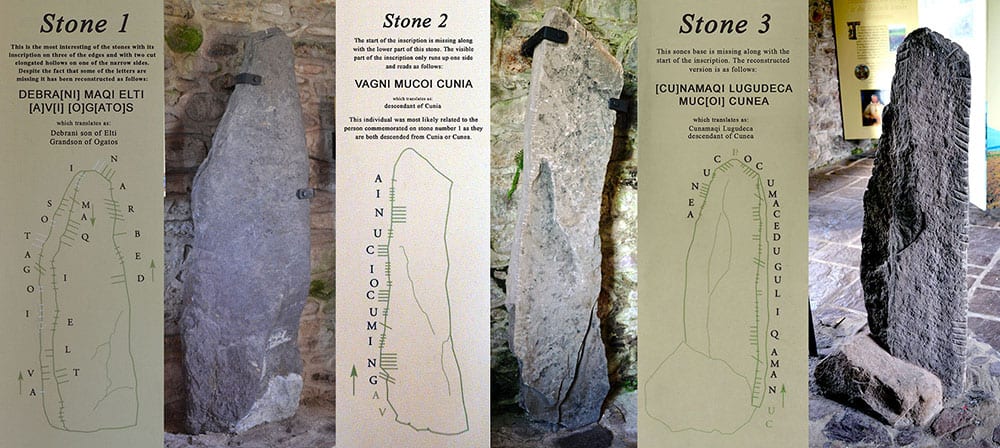
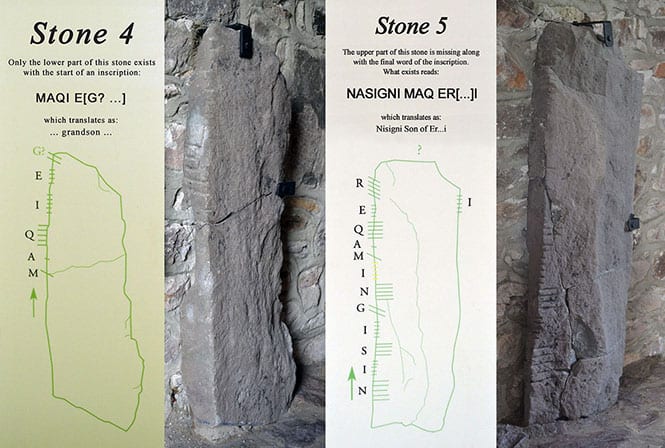
Local Place of Interest
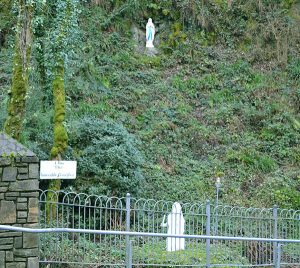
As well as the Ogham Stones, another site of interest in the area is the Holy Well, which you will pass if you are approaching the Cistercian Monastery/Abbey from the direction of Cappoquin.
Wells of this type are a common sight right across Ireland and are popular with those who wish to say a prayer and perhaps leave an offering as a sign of religious devotion.
Almost all holy wells actually pre-date Christianity but were adopted by the church as the religion became more widespread and Celtic rituals began to fade from memory.
Many such wells are renowned locally for their ability to heal the sick – a power that is generally attributed to whichever patron saint they are named for.
In some locations, handkerchiefs, rags or other small pieces of cloth are tied to the trees in the vicinity of the well.
The cloth is often red in colour, as it was believed that red is most resistant to evil.
In times past, people seeking a cure believed that as the rag disintegrated, so their illness would gradually resolve.
Others chose to bathe the affected part of their body with a rag, and then tie it to a nearby tree as a ritual offering.
Trees and stones are often found close to holy wells, and are believed to be sacred by association.
In addition, Mount Melleray National Scout Centre is picturesquely situated in the Knockmealdown Mountains, around seven kilometres from Cappoquin.
It started life as a boarding school which was affiliated to Mount Melleray Monastery.
Set in stunning surroundings comprising mountains, hills, forestry and the Blackwater river, this is a picture-perfect location, ideal for groups of all ages, as well as scouts.
It makes this an ideal location for all types of groups.
The indoor accommodation is divided into four separate areas providing a total of 166 beds. Each unit has a separate leader room.
The scout centre also offers plenty of on-site facilities, including basketball and handball courts, a games room, a multi-function hall, a games room and a camp-fire circle.

